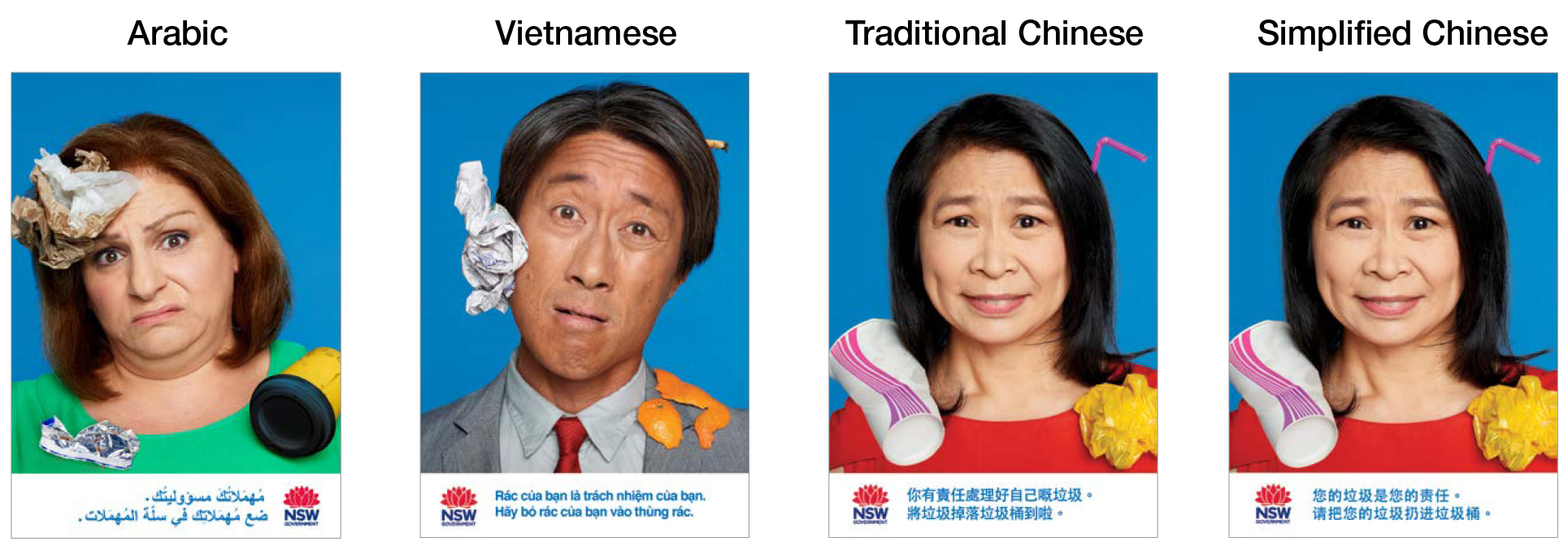Yes, the EPA has developed specific campaign materials for CALD audiences to support the ‘Don’t be a Tosser! If it’s not in the bin, it’s on you’ campaign.
However, the CALD messaging is more direct and simple, encouraging people to 'Put your rubbish in the bin. Your rubbish is your responsibility' rather than using the excuses and the phrase 'Don't be a Tosser! If it's not in the bin, it's on you' as this does not translate clearly.
The creative is available in the top four languages (other than English) spoken in New South Wales – Arabic, Vietnamese Mandarin and Simplified Chinese.
Campaign materials have also been developed for Aboriginal communities by Aboriginal communities.
